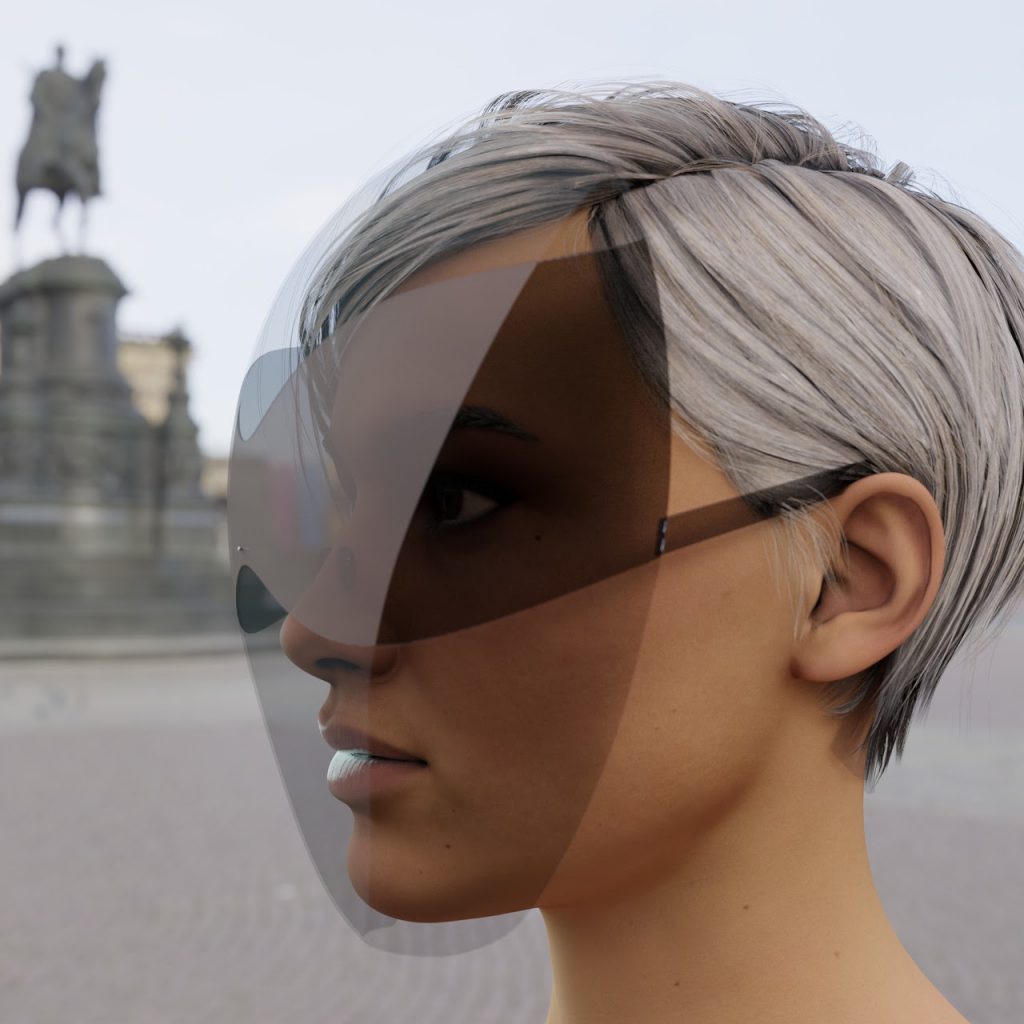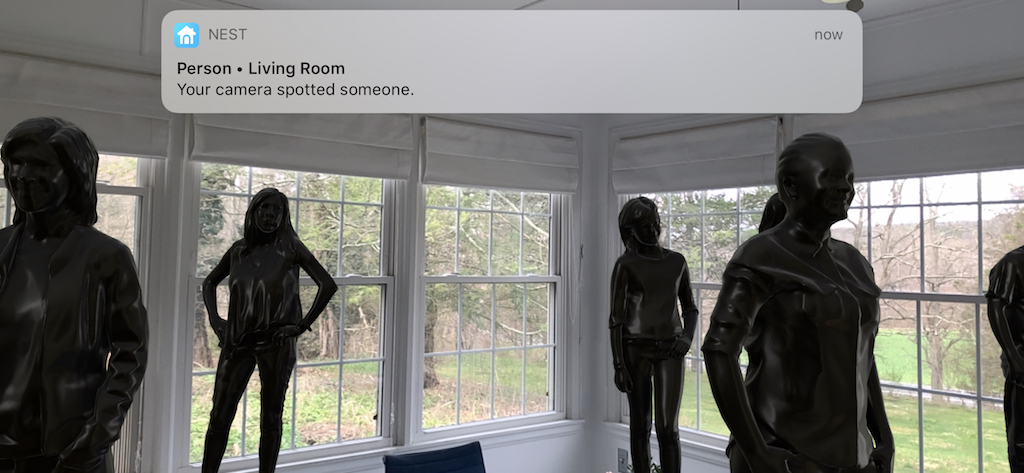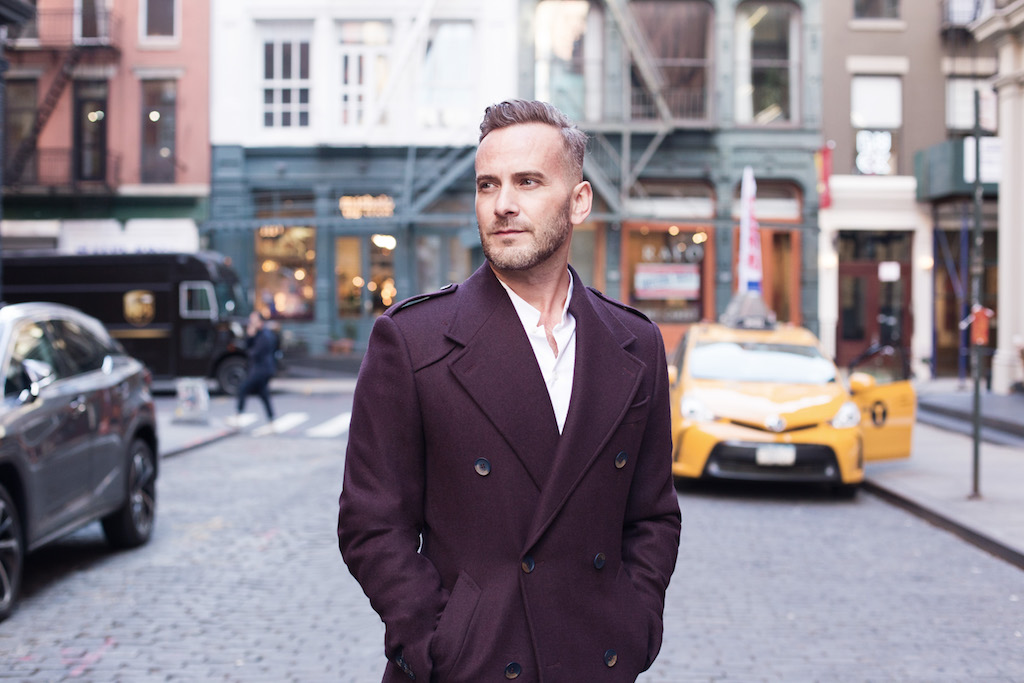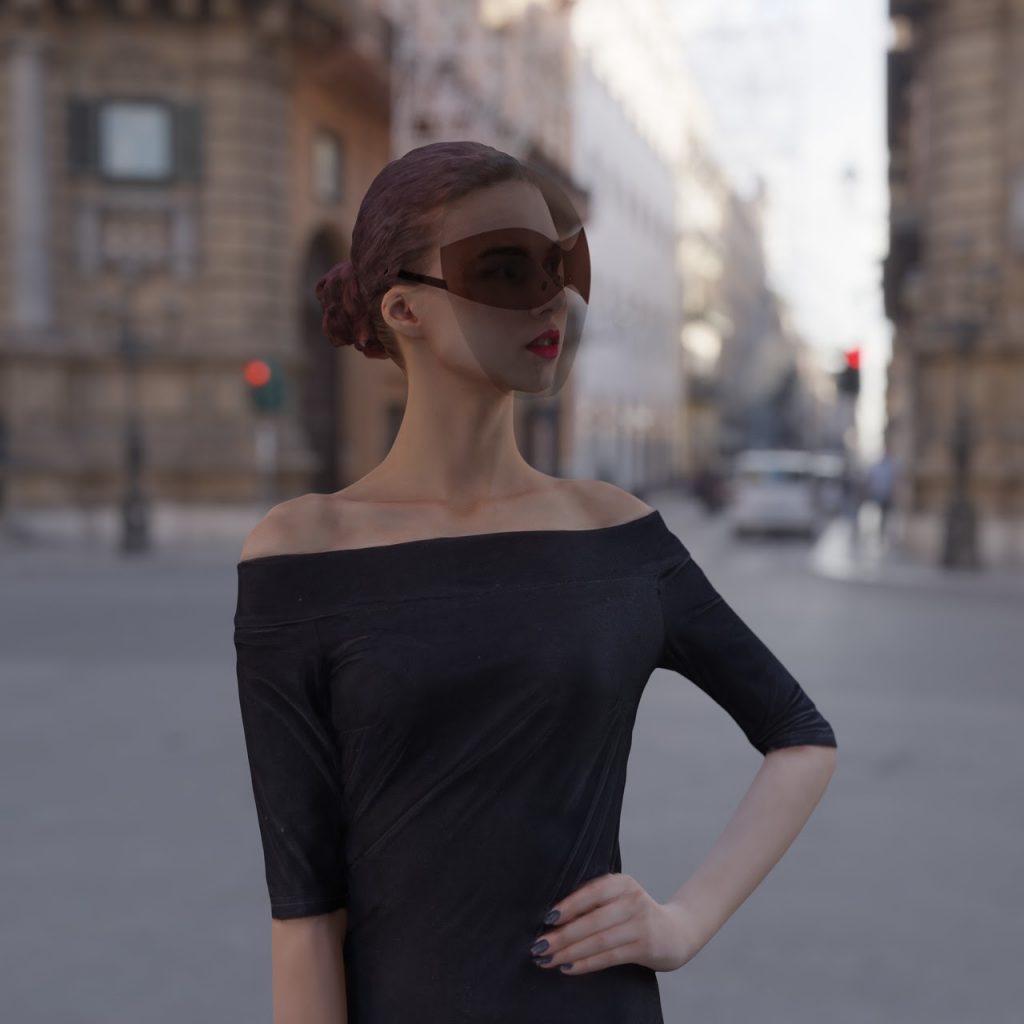New York-based acclaimed industrial designer Joe Doucet is known for his innovative products that focus on finding solutions to everyday problems. With the Big Apple being one of the hardest-hit cities due to the ongoing pandemic, Doucet has designed new objects and concepts that aim to address life in the Covid-19 era under the justified presumption that the healthcare crisis is going to have a long-term effect on how we re-engage with daily activities and the wider world.
According to the designer, studies have shown that face shields or visors are much more effective than surgical style face masks, but in their current, basic format they are uncomfortable and awkward. To try and create a face shield that people would actually want to wear rather than simply put up with, Joe Doucet has designed a shield with integrated sunglass lenses and arms that make them more practical and feel less alien and intrusive on the wearer than a typical face shield would. It is hoped that improving the basic face shield design will encourage far greater acceptance of its usage and help everyone adjust to the “new normal” long after the pandemic is over.

Doucet has designed a face shield with integrated sunglass lenses and arms that make them more practical and feel less intrusive to the wearer.
DE51GN speaks to Doucet about how designers and architects are stepping up their efforts to respond to the global healthcare crisis.
How did the Covid-19 pandemic provide the impetus for you to design a whole range of products that provide news ways to integrate design and the need of the hour?
Joe Doucet (JD): Ultimately, the heart of design lies in problem-solving. Sometimes that can be as trivial as a more effective toothbrush or dining chair. In times of crisis, however, responsible designers shift their focus and way of thinking to address the issues at hand. I feel it is our responsibility to do whatever we can to help. We are not frontline workers risking our lives, but we can make some form of contribution as best as our skill-set allows.
“The service industry, the most hard-hit sector in terms of economic impact will be the place where innovation and new and safer practices are needed most. Most people do not want to cut their own hair or sit alone at a restaurant table. There is an opportunity here for design to help bring about solutions that will both keep people safe and restore the livelihoods of millions of people around the world.” – Joe Doucet, founder and creative director of New York-based multidisciplinary design studio, JDXP
Designers and architects have had to respond to the pandemic challenge very swiftly. How did you tackle this?
JD: It is a fairly strong forward approach. I look at what needs to exist and make it. I wish I had a more complex and nuanced answer than that, but that is simply how I am approaching it.

Air Co., the world’s first carbon-negative vodka brand and one of JDXP’s existing clients, was one of the first brands to play an active role and decided to shift their entire production to making hand sanitisers made up of 70% ethanol. It commissioned JDXP to quickly design a pump dispenser that reflected the existing vodka packaging, utilising all environmentally materials and eschewing waste. Since the onset of the crisis, Air Co. has produced nothing but hand sanitisers, and donated its entire production to key workers through a collaboration with NYC officials.
In what ways do you reckon designers will have to change the way they approach any project from here on?
JD: The slowest way to make a fool of yourself is to predict the future. That being said, not much will change in the approach, just the reality to project lives. Design professionals will likely have to adapt to new behaviours and needs, therefore, new products will be needed. But that’s not new – 50 years ago, designers were making quite different contributions than they were before the crisis hit. And 50 years from now, the same will likely be true.
It’s been said that life post-Covid-19 will never be the same on the lines of how air travel changed forever post 9/11. What kind of products can we expect to see that will have a major bearing on our lives?
JD: Mostly, I think processes will be more affected than anything else. How we board, sit and de-plane will be the first to be realised. Masks and gloves will be universal; screening will not only be there to detect weapons and bombs, but a health screening will be required before entering the airport. Perhaps design innovations are most needed to bring about a de-friction approach to these processes.

Looking to reconnect with aspects of our life that we now take for granted, such as visiting an art exhibit, Joe Doucet has used augmented reality to bring the intimacy of a gallery visit to whatever space you’re in. Using your iPhone or Android, you can move between a virtual installation of a dozen people in your space spaced 6-feet apart.
Your work has already championed the integration with technology even before the pandemic. But what role will it play in the near future? Will we become ever more reliant or will it be a resetting of balance? For example, under such a lockdown where even services such as hair salons are closed, people have been resorting to DIY haircuts at home. Do you reckon there are some things that can’t be solved by design/technology since design is essentially about solving problems?
JD: One thing seems certain, the typical working situation will not go back to the status quo. People and companies are understating that efficiency and productivity are not reliant on physical presence.
The service industry, the most hard-hit sector in terms of economic impact will be the place where innovation and new and safer practices are needed most. Most people do not want to cut their own hair or sit alone at a restaurant table. There is an opportunity here for design to help bring about solutions that will both keep people safe and restore the livelihoods of millions of people around the world. Let’s go after it!
You might also like:
Creative Crews discusses its award-winning classroom makeover for blind children in Thailand





